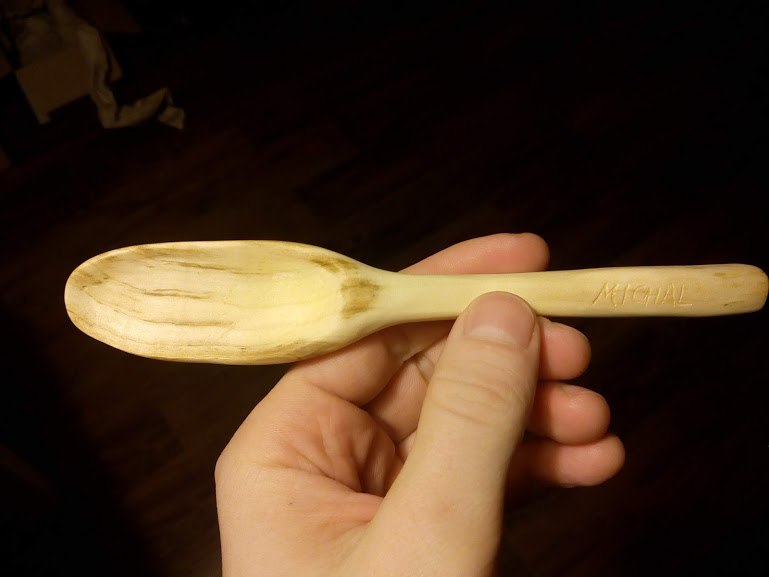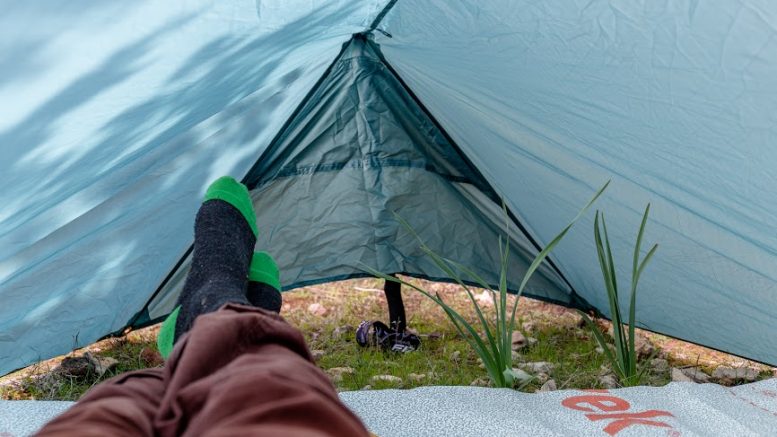Last year I decided to change my traditional hiking gear for ultralight gear.
I’ve been always a big fan of ultralight hiking but my circumstances hadn’t allowed me to make the switch.
Why is that?
Firstly, I already had all the hiking gear I needed and switiching to ultralight was unacceptable for my environmentalist soul. Why buy new stuff to replace old stuff if it’s still completely functional? Well, after 7 years with my backpack, the Osprey Kestrel, I realized it could easily serve me another 20 and if I waited that long, I might never see any ultralight gear at the end of the tunnel.
Secondly, I couldn’t (and still can’t) afford to own two backpacks or two sleeping mats. I’m still nomadic and I need my life to fit into a single backpack. And even though I’m minimalist by heart, I have to admit that all of my stuff wouldn’t fit into a 30L ultralight pack.
But in 2018, I decided to go ultralight anyway. For me, one of the main motivations for going ultralight is to be nice to my body.
I’m only going to get older and I want to keep hiking for a long time. I have only one back and one pair of knees and I want them to stay strong for the time ahead. Nothing hurts yet but that’s no reason not to be one step ahead and be even more careful with my body.
What I Did First
First of all, I identified the key areas where my hiking gear is heaviest. I reckon it’ll be the same for other hikers, too.
Most hiking weight comes from the Big Four: Backpack, tent, sleeping bag and sleeping mat.
It’s important to think about those 4 things as a system: they work together and every part is equally important.
For example, if you have a good sleeping mat, maybe you don’t need such a good sleeping bag or you might even get away with a quilt.
On the other hand, if your tent is so light that it can’t cope well in strong winds, you might want to have a warmer sleeping bag with a water resistant layer and hydrophobic down.
In the table below you can see what I switched from and how much weight I saved.
| My old “heavy” gear | Weight [g] | My old “light” gear | Weight [g] | |
| Backpack | Osprey Kestrel 68 | 1820 | Montane Ultra Tour 40 | 734 |
| Tent | Jurek Alp Duo 2.5 | 3200 | Lunar Solo | 740 |
| Tent pegs | 10 aluminium | 186 | 6 titanium | 36 |
| Sleeping mat | Foam cheap mat | 420 | Thermarest Xlite | 340 |
| Sleeping bag | Kathmandu Navigator | 1170 | Citerion Prime 400 | 905 |
| 1 Fizan trekking pole | 171 | |||
| Total weight | 6796 | 2926 |
As you can see, my Big Four weigh almost as much as my old Osprey backpack alone.

Montane Ultra Tour 40l is a good start. Very light but still with a good back support
I could have gone even for lower numbers, but I was balancing out my budget and the fact that I’m living in Scotland right now. It’s pretty wet here and there are days where I wouldn’t go hiking without a snorkel, so I prioritized slightly more sturdy materials over the lightest possible weight.
Knowing Your Gear is the Key
If you’ve never tried ultralight gear before, it might be a bit of a scary world to step into as it’s a completely new universe and changes fundamental things about the way you hike.
For me, it wasn’t a big deal though. I just had to tweak my attitude a bit. Simply put, it’s really important to know your gear – its characteristics, advantages and limits.
Let me explain.
When it comes to tents, if you have a good, double sided tent that weights 3 kg, you probably don’t have to worry too much about where you’re gonna pitch that beast. On the other hand, if you have a 700g, single wall, non-free stating tent, you have to pay a close attention to where you put it (unless you want to go for a spin at night when a sudden gust hits your tent so heavily that you get wet slaps all over your face).

I love my new tent – SMD Lunar Solo
Ultralight gear is just a tiny bit more delicate than traditional gear.
Knowing how to approach it so you don’t destroy it is the key for a happy ultralight hiking life. To learn about your gear, check Youtube for reviews, do your research about the materials that your shelter is built from and try to apply what you’ve learnt when you’re out there.
Where to go next
My Big Four is sorted and the time to cut down my toothbrush’s bristles is not here yet.
So, what’s the next step in shaving off my weight?
For me, a big challenge is not to take too many clothes. I can be a safety freak sometimes and I often imagine a scenario in which I get soaked and cold and I want to have enough spare clothes to put on after I pitch my tent.
To be honest, this has never happened to me and I’ve been hiking for many years now. When it’s raining just a little, my rain jacket protects me. When it’s raining cats and dogs, I simply don’t hike. I either stay in bed or if I’m doing a long distance hike, I find myself a shelter or just pitch a tent and stay dry. So easy and voilá – another kg is saved.
I had a similar approach to my first aid kit. I tended to take too many things: bandages, plasters, spare plasters, pain killers, tape, scissors, disinfection, antibiotics… Well, my new approach is this: I take pain killers and a bandage and that’s it. If something happens, pain killers will help me to get down and out find help.
Things like plasters are for less serious injuries and those can wait a few hours to be treated when I get to a town. Yes, if I go hiking to northern Siberia, I’ll take enough plasters, but we live in highly inhabited world and it’s usually not that far to the first settlement.
A great way to figure out where to go next is to work out saved grams per money unit.
Let’s say my new backpack cost me 80 GBP and it’s 1086g lighter than my previous pack. That’s 1086g / 80 = 13,57g saved per 1 GBP. That’s very good and this will likely not happen again with other gear. The lighter you go, the more expensive and harder it gets to shave off more weight.
So, figure out which item on your list will save the most amount of weight for least amount of money and that will be your next replacement.
It’s All About Mindset
For me, ultralight hiking is about the mindset, not about what super-trooper new gear you’re wearing. Grandma Gatewood hiked the Appalachian trail when she was 75 with a potato bag over her shoulder and she was fine.
The most important thing is to get out and go hiking, not to buy new gear. Before I bought my first camping pot, I hiked in New Zealand with a standard saucepan from my flat’s kitchen. The money for a new pot could by multiple trips to the mountains. That was no brainer for me. Perhaps not the best example but you get the drift. [Ed. It’s important to be safe, we are not encouraging people to skimp on gear and hike irresponsibly, but we do frequently see people kitted out with the most expensive gear that quite often isn’t necessary.]
Ultralight backpacking is about how to comfortably walk the trail while carrying everything you need and nothing you don’t need.

A wooden spoon that Anna made for me is great. Super ultralight and simple, fits into my pot, works well for steering
I always think carefully about every single item I’m going to carry and I ask myself: How often am I going to use this? If the answer is “not very often” or “once or twice a day for a minute”, then I start to think about whether there is a way to replace that item with something else. I’m basically looking for items that have multiple purposes. Like a buff that I can use as a scarf and a towel. Or a tarp that I can use as a raincoat.
Sometimes I even find that I simply don’t need that item at all. Like a knife that I’ve never used for anything but cutting bread. Now I tear it and the problem’s solved. Another example are spare batteries for my head torch – I stopped carrying them because I’ve never used them. If my head torch is getting flat, the light starts to worsen and soon or later I’m gonna pass a shop where I can buy new batteries. Besides that, all smartphones these days have torches that can be used in case of emergency.
I hope that all traditional hikers will find the courage and a bit of money to dive into the world of ultralight hiking. It’s simple, enjoyable, and opens up many opportunities for longer hikes that you may not have been physically capable off if you were carrying more gear.
And yes, the best part are the looks you get from people with 20 kg on their backs asking “Uh, that’s your pack? But where is your tent and a sleeping bag? Surely you don’t have it all there!” And you just make a tiny smile and with a subtle look at their backpacks you whisper in return: “It’s all there buddy, it’s all there”.

Good article, I have done the same type of thing. Single skin tents can suck in midge areas and often just get wet inside (dripping wet). I can’t see leaving plasters out as sensible. Zero weight and prevention of infection is vital, so the balance can be the trick.
Yup, all about balance and your needs!
Hi Michal.
My name’s Amit, originally from Israel.
Love your blog/writing, very to the point, very helpful, makes you wanna go out and hike – And!! easy to read.
I have 14 days off work this coming February.
I guess the Canary Islands will be enough to fill that in?
I prefer hiking (for now) in greenish areas, with as many plants and trees as possible. Also beaches are a welcome sight 😉
Perhaps you have any specific tips for hiking trails in the islands with that kind of scenery?
Thank you in any case!
Hi Amit, thank you for your kind words.
14 days for the Canaries are quite a lot but I’d probably visit only 1 or 2 islands maximum to have some to explore, enjoy and rest. Green areas with trees are scare on the islands. La Gomera has some nice rain forest in Garajonay National Park so you might want to go to check it out 🙂
Will do!
Also read your blog about it.
Thank you!
That tent looks insane!! I just can’t imagine sleeping in something that’s not closed if it rains or snows overnight! Haha
We experienced a few storms in it and it was quite deep experience. Basically you’re trying to fall asleep while watching heaps of water dropping off the tarp edges on the ground, 10 cm from you nose. I liked it though